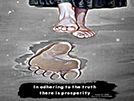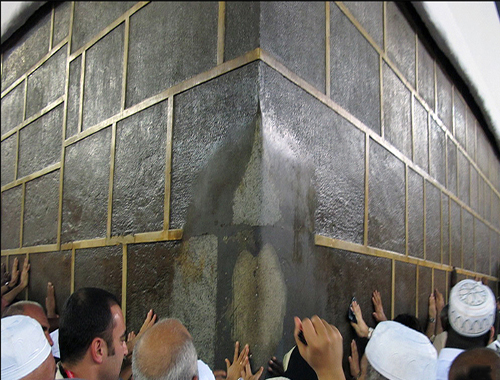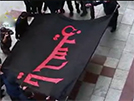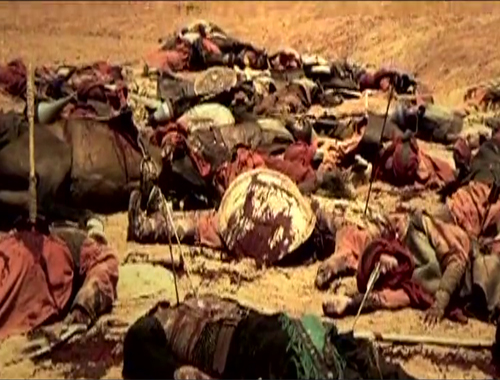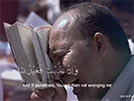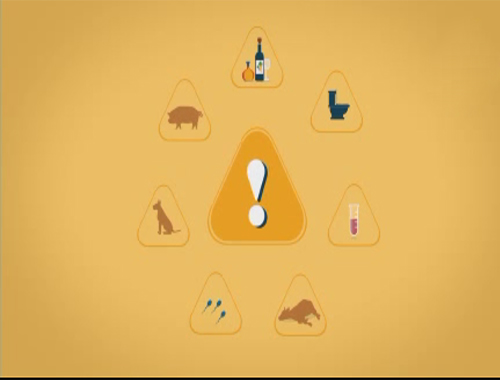3. Mu‘tasim’s Rule
- Details
- Hits: 3397
3. Mu‘tasim’s Rule
Ma’mun ar-Rashid died in the year 218 A.H. He was succeeded by his brother, Mu‘tasim billah. In the year 220, Mu‘tasim ordered that Imam Muhammad at-Taqi be brought from Medina to Baghdad.
One day a person came to the court of Mu‘tasim and confessed that he had committed theft and would like to be punished so that he could be free from the guilt and punishment in the hereafter. The Qur’an says that the punishment for theft (with some conditions) is cutting off the thief’s yad. Yad means: hand, forearm and elbow. So the caliph called all the prominent religious scholars, including Imam Muhammad at-Taqi (a.s.), and asked: “From where should the yad of the thief be cut?” (The Qur’an is asking for the definition of “yad”.)
Ibn Abi Da’ud, the chief judge, said, “From the wrist.”
Mu‘tasim: “What is your proof for that?”
Ibn Abi Da’ud: “The word ‘yad’ has been used in the verse of tayammum —so wipe your faces and your hands(5:5)— for the hand.”
Some scholars agreed with Ibn Abi Da’ud but others disagreed and said: “Cut the thief’s yad from the elbow.”
Mu‘tasim: “What is your proof?”
The scholars: “The word ‘yad’ has been used in the verse of wudhu —wash your faces and your hands up to the elbows (5:5)— for the fore-arm.”
Then Mu‘tasim turned towards Imam Muhammad at-Taqi (a.s.) and asked his opinion. The Imam first declined to give his view because he was aware of the court’s politics. But when Mu‘tasim insisted, the Imam finally said, “All these gentlemen are mistaken because only the [four] fingers have to be cut.”
Mu‘tasim: “What is your proof?”
The Imam (a.s.): “The Prophet (s.a.w.) has said that sajdah is done on seven parts of the body: forehead, palms, knees and two big toes [of the feet]. If a thief’s hand or forearm is cut, then it would not be possible for him to do the sajdah whereas AllÄh has said, ‘And verily the masÄjid [the body parts on which sajdah is done] belong to AllÄh...;’ and what belongs to AllÄh should not be cut.”
The caliph liked the answer of the Imam and ordered that the four fingers of the thief be cut.
This extraordinary event, in the public’s view at Mu‘tasim’s court, proved the superiority of the Imams of Ahlu ’l-Bayt. It, however, also created an extreme feeling of jealousy and hatred in the heart of Ibn Abi Da’ud.
On finding an appropriate moment, Ibn Abi Da’ud cautioned the caliph against inadvertantly promoting Imam Muhammad at-Taqi (a.s.) by publicly following his view and rejecting those of the other scholars. He filled the caliph’s ears to the extent that the caliph started looking at the Imam as a threat to his own caliphate.
During the last days of Dhul Qa‘dah 220 A.H., the Imam was poisoned by his wife, the niece of Mu‘tasim, and he died as a martyr. His body was buried next to his grandfather’s grave in the Qurayshi cemetary in Baghdad which is now known as KÄdhimayn.
* * *
This lesson has been written and compiled by Sayyid M. Rizvi by using the following sources.
1. Shi’a Islam’ of Allamah Sayyid Muhammad Husayn at-Tabataba’i.
2. Pishway-e Nahum: Hazrat Imam Muhammad al-Jawad (a.s.)
by Dar Rah-e Haq, Qum.
The main sources have been extensively edited in order to fit the requirements of our course. Also, for the sake of brevity, we have not included the references quoted by our sources. Those who are interested to know the sources may refer to those mentioned above.


